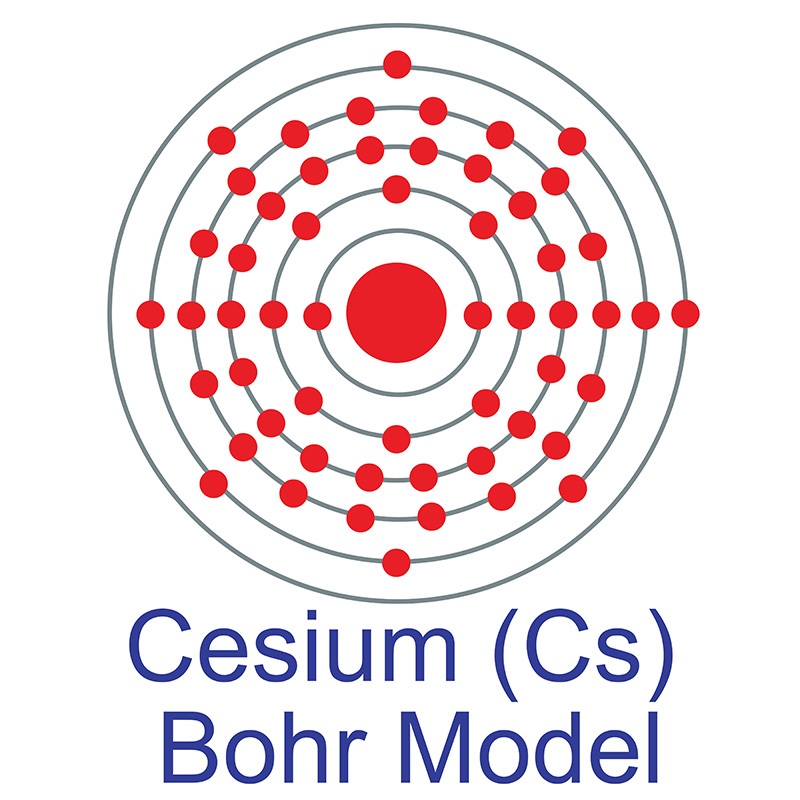
UsesĬesium chloride is used in radio and television vacuum tubes. This misconception is easy to make, since there is a center atom in the unit cell, but CsCl is really a non-closed packed structure type. Therefore, it is a good material for equilibrium gradient differential centrifugation where the separation of the particles is size and density dependent.Ĭesium Chloride is a type of unit cell that is commonly mistaken as Body-Centered Cubic. Due to its hygroscopic characteristic, when put in water, it forms a dense solute that is not very viscous. It has a large mass and is highly soluble in water (1865 g/L). Chemical PropertiesĬesium chloride (CsCl) is an inorganic, colorless, hygroscopic crystalline powder. Intravenous administration of cesium has been shown to cause arrhythmias in animal models. Cesium may also cause hypokalemia indirectly via loss of potassium due to repetitive diarrhea. Cesium causes hypokalemia by inhibiting potassium channels used for absorption of dietary potassium and for re-absorption of renal potassium. The resulting alkaline environment is thought to prevent cancer cells from undergoing mitosis eventually resulting in cell death. Proponents of cesium chloride therapy claim that it exerts antitumor effects by increasing the intracellular pH of tumor cells. PreparationĬesium chloride can be prepared by the reaction of caesium hydroxide or caesium carbonate with hydrochloric acid: the resulting salt is purified by recrystallization. However, no CsCl products have been approved by FDA to treat cancer or other diseases.

These claims are not supported by scientific evidence.Ĭesium chloride (CsCl) is a mineral salt that is sometimes taken either by mouth, or by injection into the body, by cancer patients who seek alternative treatments. Cesium chloride (non-radioactive) is also promoted as an alternative cancer therapy. DNA fragments with differing A-T or G-C content).

This allows separation of DNA of different densities (e.g. At this point, the DNA will stop migrating. When DNA is centrifuged in this solution, fragments of DNA will migrate down the tube until they reach a zone where the density of the DNA is equal to the density of the solution. In this method, a Cesium chloride solution is centrifuged, allowing centrifugal and diffusive forces to establish a concentration gradient (and thus a density gradient) within the centrifuge tube. It is also used to make solutions for the separation of RNA from DNA by density gradient centrifugation.Ĭesium chloride is also widely used in the centrifugation of DNA, in a technique known as isopycnic centrifugation. UsesĬesium chloride is used for the preparation of electrically conducting glasses. If the two atom types are similar in size (imagine field hockey balls packed with tennis balls) then in the cubic lattice the structure will be like that of sodium chloride.

It is the case that in a cubic 1:1 solid where one atom type is much larger than the other that the Cesium chloride type lattice is obtained, it can be thought of as a combination of basketballs and golf balls packed in a cubic manner with the golf balls in the gaps between the basketballs. The Cesium chloride structure is composed of interlocking simple cubic lattices of anions and cations. White cubic crystal hygroscopic density 3.99 g/cm3 melts at 645☌ vaporizes at 1297☌ very soluble in water, soluble in ethanol. It is a reagent in analytical chemistry, where it is used to identify ions by the color and morphology of the precipitate. Cancer radiation therapy, high pH therapy), in the diagnosis of myocardial infarction, and as a solute for ultracentrifugation.Ĭesium chloride is widely used medicine structure in isopycnic centrifugation for separating various types of DNA. Less than 20 tonnes of CsCl is produced annually worldwide, mostly from a caesium-bearing mineral pollucite.Ĭesium Chloride is a chemical reagent used in nuclear and radiologic medical treatments (e.g. Cesium chloride occurs naturally as impurities in carnallite (up to 0.002%), sylvite and kainite. CsCl changes to NaCl structure on heating. Its crystal structure forms a major structural type where each caesium ion is coordinated by 8 chlorine ions. This colorless solid is an important source of caesium ions in a variety of niche applications. Cesium chloride is the inorganic compound with the formula CsCl.


 0 kommentar(er)
0 kommentar(er)
